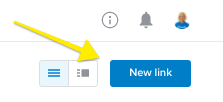Nowadays, it’s rare that you’d hear the words generic, untargeted, impersonal or unbranded when it comes to marketing — which poses the question, why are people still using long, generic, unbranded links?
When planning out campaigns, everything is mapped out down to the last detail, from the target audience, to messaging, CTAs, user journeys, and so much more. But one very important detail is often overlooked — the links.
Rebrandly partners Internet Watch Foundation (IWF)In this article, we’ll look at how to shorten a long URL, and why you should be using a branded link, as opposed to a generic short URL.
But first, let’s start with the basics.
In the traditional sense, a long link looks something like this:
https://blog.rebrandly.com/the-best-content-marketing-tools-for-2020
When a marketing team gets a hold of it, it starts to look a little more like this:
https://blog.rebrandly.com/the-best-content-marketing-tools-for-2020?utm_source=may-newsletter&utm_medium=email&utm_campaign=best-content-marketing-tools
The reason for this is because they’ve added tracking parameters to the link, something that’s very common where demand or lead generation campaigns are concerned (or anything that requires budget, really).
And while links like that might look normal to someone who’s familiar with them, they can be very off-putting for consumers. For that reason, you should consider using a URL shortener to make them more appealing to click on.
Choosing a URL shortener
Generally speaking, there are two types of URL shorteners: custom and generic.
A generic URL shortener is probably the one most people are familiar with — similar to goo.gl before it ceased operation. This type of URL shortener allows you to create short links with a generic domain that is publicly accessible.
A custom URL shortener, on the other hand, offers a similar service — in that it enables you to shorten links — but allows you to use a custom domain to do so.
One of the main benefits of using a custom URL shortener instead of its generic counterpart is that your links aren’t at risk of being marked as spam or blacklisted. The reason for this is because you own the domain that you’re using to create your links, meaning you’re in full control of its security. And ultimately, a secure domain means you won’t be mistaken for a spammer — unless you are actually a spammer, that is.
How to shorten a long URL
Shortening a long URL is really simple. Using Rebrandly — a custom URL shortener — as an example, we’ll walk through exactly how you can do it in just a few quick steps.
- When you open your Rebrandly dashboard, click on the ‘New link’ button in the top right-hand corner.

- Paste or enter your destination URL.

- Choose your branded domain — any domains that you’ve linked to your Rebrandly account will appear in a dropdown menu.
- Customize your slash tag. When doing this, bear in mind that branded links can be beneficial for SEO, so choose keywords that are relevant to the campaign, blog post or page you’re sharing.

If all you’re doing is shortening a link, then from there, you’re ready to go — just hit ‘create link’ and you’ll be all set.

If you haven’t pre-populated your UTM parameters, you can use Rebrandly’s built-in UTM builder to add them as you go — you’ll also have the option to save these UTM parameters as a preset so you can quickly access it at a later stage.
And there you have it, a quick and easy guide to shortening a long URL. Once you’ve shortened and branded your links, you can use them to collect valuable click data, increase your CTR on social media, boost engagement, and much more.
Find out more how you can use branded links to:
This article is about:
- How to shorten a long URL
- Shortening long URLs
- Branded links vs generic short URLs
Originally posted: Mar 4th, 2020
Reposted: Jul 15th, 2021


